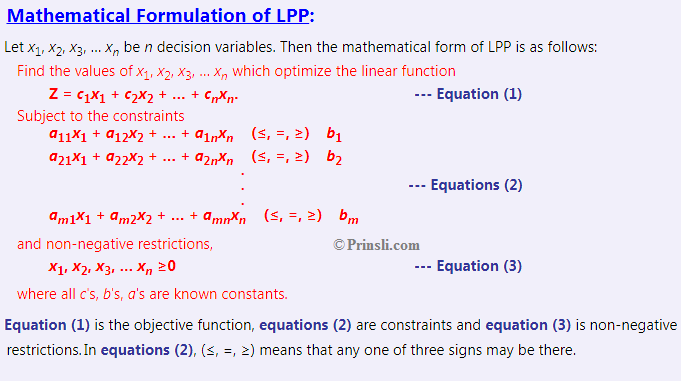
Difference between PERT and CPM: In operations research, both PERT (Program Evaluation and Review Technique) and CPM (Critical Path Method) are widely used for project management and scheduling.
We know that a Network is a technique used for planning and scheduling large projects in the fields of construction, maintenance, fabrication, purchasing, computer system instantiation, research and development planning etc. Nowadays we use CPM (Critical Path Method) and PERT (Project Evaluation & Review Technique) as technical tools for planning, scheduling, and controlling stages of the projects.
PERT and CPM are standard methods of network analysis. PERT/CPM in Network Analysis as the technique is sometimes called, was developed by two different groups, one industrial and the other military. PERT is a CPM extension.
PERT was developed originally in 1958 and 1959 for the “age of massive engineering,” when Taylor and Gantt’s techniques were no longer applicable. After the technique was developed, the US Navy’s Special Projects Office implemented it on its Polaris Weapon System in 1958, for the Polaris missile program’s planning and control.
Around the same time that the Navy was developing PERT, the DuPont Company launched a similar technique known as the CPM. CPM (Critical Path Method) was developed in 1957 by J. E. Kelly of Remington Rand and M. R. Walker of E. I. Du Pont de Nemours & Co. to solve project scheduling problems.
PERT and CPM are both project management tools used to plan and schedule activities in a project. Both PERT and CPM are essentially time-oriented methods for determining a project’s time schedule. While they are similar in many respects, there are some key differences between them. The major difference between these two techniques is,
- PERT is a Probabilistic approach for determining time estimates of different activities that are not exactly known to us. It is a technique of planning and control of time. It is suitable for Research and Development projects.
- CPM is Deterministic in nature because different estimates are known in the case of CPM. It is a method to control cost and time. It is suitable for Non-research projects like civil construction, shipbuilding, etc.
What is the difference between PERT and CPM with examples in Operations Research in detail?
Here’s a comparison of the two techniques along with examples:
1. Focus on Time Estimates:
- PERT: PERT places more emphasis on estimating the time required for each activity using three time estimates: optimistic, pessimistic, and most likely. These estimates are then used to calculate the expected duration of each activity and the project as a whole.
- CPM: CPM, on the other hand, typically relies on a single time estimate for each activity. It does not use the optimistic and pessimistic estimates like PERT does.
Example: Consider a manufacturing project where the time required to develop a new product prototype is estimated using PERT. The optimistic estimate for the prototype development is 3 months, the pessimistic estimate is 6 months, and the most likely estimate is 4 months. Using PERT, the expected duration would be calculated as (3 + 4 * 4 + 6) / 6 = 4.17 months.
2. Probability Considerations:
- PERT: PERT incorporates probability distributions into its calculations, allowing for the assessment of the likelihood of meeting project deadlines and identifying activities with the greatest risk.
- CPM: CPM does not explicitly incorporate probability distributions into its calculations. It assumes deterministic activity durations.
Example: In a construction project, PERT is used to estimate the time required for laying the foundation. Based on historical data and expert opinions, the PERT analysis reveals that there is a 70% probability of completing the foundation work within 4 weeks and a 90% probability of completing it within 5 weeks.
3. Flexibility:
- PERT: PERT is more flexible and useful for projects with uncertain activity durations or those involving research and development where there’s a lot of uncertainty.
- CPM: CPM is more rigid and is best suited for projects where activity durations are relatively certain and can be accurately estimated.
Example: In a research project aimed at developing a new drug, PERT is used to estimate the time required for various stages of drug discovery and clinical trials, considering the inherent uncertainty and variability associated with each stage.
4. Calculation of Critical Path:
- PERT: PERT does not explicitly identify the critical path. Instead, it focuses on calculating the expected duration of the project and the variance associated with each activity.
- CPM: CPM explicitly identifies the critical path, which is the longest path through the project network and determines the shortest possible project duration.
Example: In a software development project, CPM is used to identify the critical path, which includes activities such as requirements gathering, design, coding, testing, and deployment. The critical path determines the sequence of activities that must be completed on time to ensure the project’s timely completion.
5. Application:
- PERT: PERT is commonly used in research and development projects, construction projects, and other projects where there is a high degree of uncertainty in activity durations.
- CPM: CPM is often used in construction projects, manufacturing, and other projects where activities are well-defined and the focus is on minimizing project duration.
In summary, while both PERT and CPM are project management tools used for planning and scheduling activities, they differ in their approach to time estimates, consideration of probability, flexibility, critical path calculation, and application. Choosing between PERT and CPM depends on the nature of the project and the level of uncertainty involved in activity durations.
Read Also – Historical Development of Network Analysis: PERT and CPM
The basic differences between PERT and CPM are given below:
|
PERT (Program Evaluation & Review Technique) |
CPM (Critical Path Method) |
|
| 1. |
PERT is a project management technique, used to manage uncertain activities of a project |
CPM is a statistical technique of project management that manages well-defined activities of a project. |
| 2. | It is a technique of planning and control of time. | It is a method to control cost and time. |
| 3. |
PERT is generally applied for planning and scheduling research programs and developing projects. |
CPM is generally used for construction and business problems. |
| 4. | It is suitable for Research and Development projects. | It is suitable for Non-research projects like civil construction, ship building etc. |
| 5. | It is Event-oriented. | It is Activity-oriented. |
| 6. |
It is a probabilistic model with uncertainty in activity duration. The duration of each activity is normally computed from multiple time estimates. |
It is a deterministic model with well known activity (single) time based upon the past experience. It does not deal with uncertainty with time. |
| 7. | It uses dummy activities to represent the project sequencing of the activities. | It does not make use of dummy activities to represent the project sequencing. |
| 8. | It has Non-repetitive nature. | It has Repetitive nature |
| 9. | Unpredictable Activities | Predictable activities |
| 10. | It is focused on time only. | It is focused on Time-cost trade-off |
References: Various books from the college library with the following books
- Heagney, J. (2016). Fundamentals of project management (5th ed.). American Management Association.
- Meredith, J. R., & Mantel, S. J. (2011). Project management: A managerial approach. John Wiley & Sons.
- Taha, H. A. (2016). Operations research: An introduction (10th ed.). Pearson.
- Hillier, F. S., & Lieberman, G. J. (2014). Introduction to operations research (10th ed.). McGraw-Hill Education.
- Tags: difference between pert and cpm, what is the difference between pert and cpm, difference between pert and cpm in project management, difference between cpm and pert with example, difference between pert and cpm in operation research, difference between pert and cpm in operations research, difference between pert and cpm with example, basic difference between pert and cpm, pert and cpm difference between, differentiate between pert and cpm, distinguish between pert and cpm
Copyrighted Material © 2019 - 2024 Prinsli.com - All rights reserved
All content on this website is copyrighted. It is prohibited to copy, publish or distribute the content and images of this website through any website, book, newspaper, software, videos, YouTube Channel or any other medium without written permission. You are not authorized to alter, obscure or remove any proprietary information, copyright or logo from this Website in any way. If any of these rules are violated, it will be strongly protested and legal action will be taken.




Be the first to comment